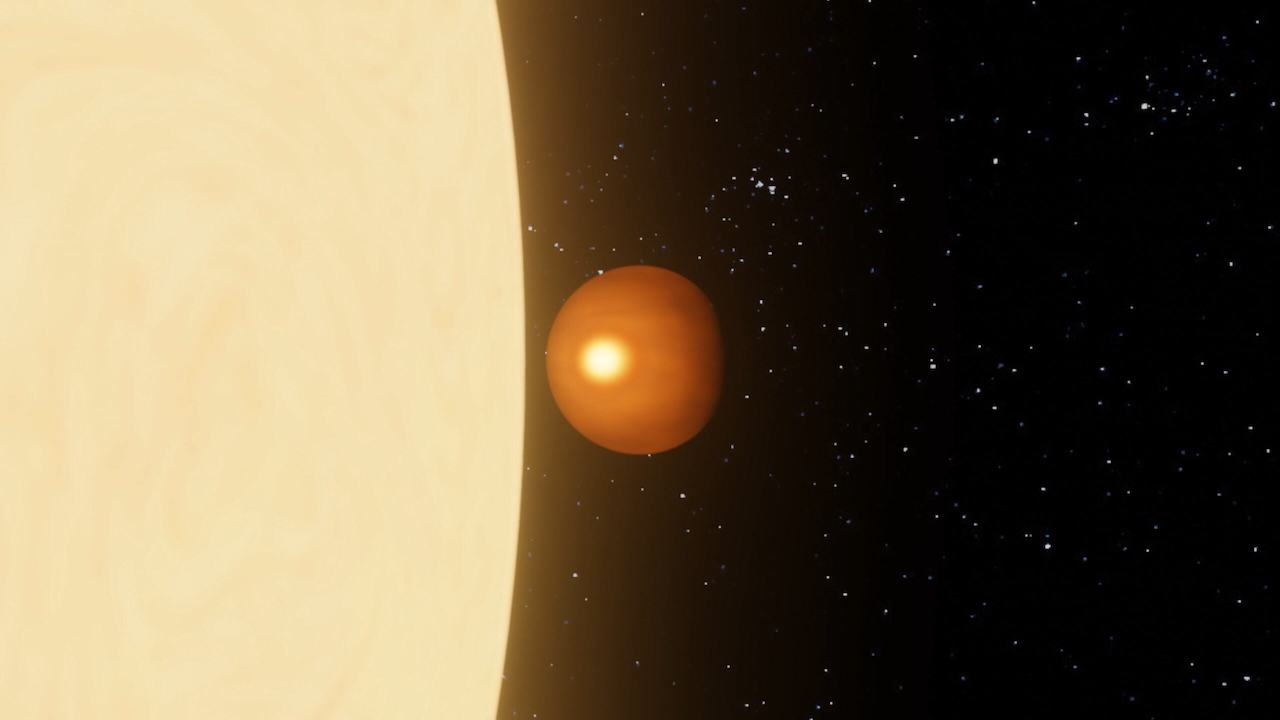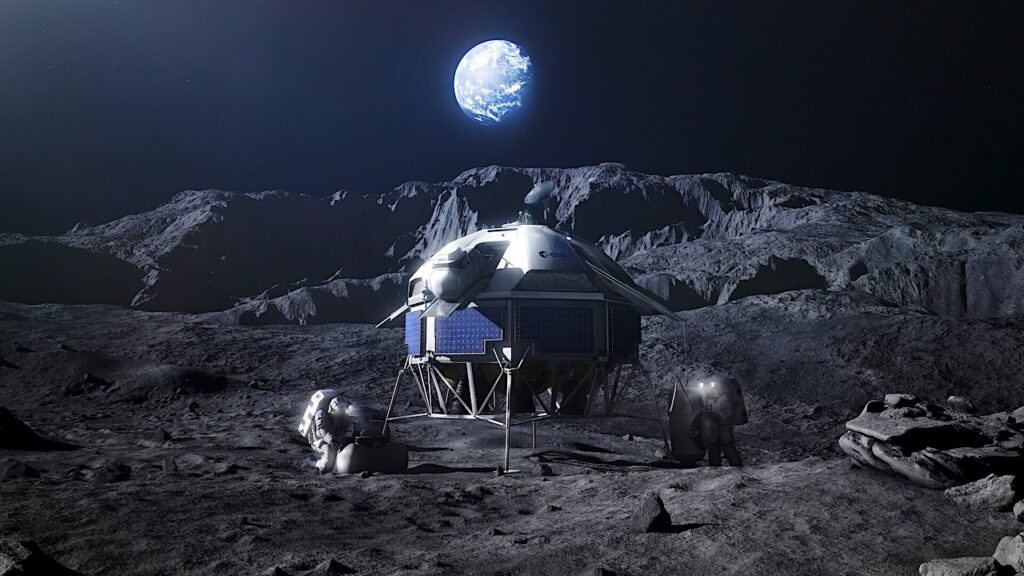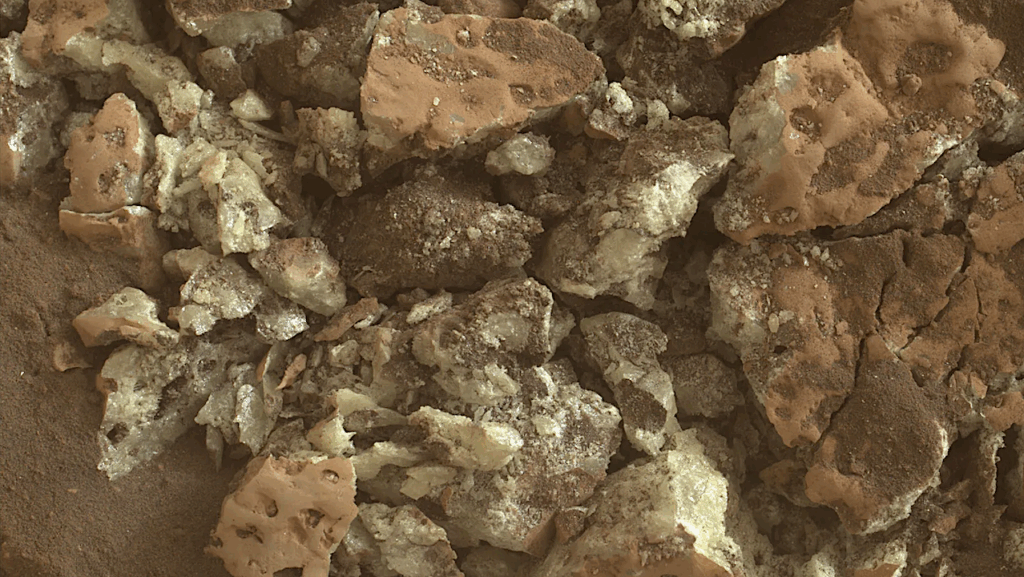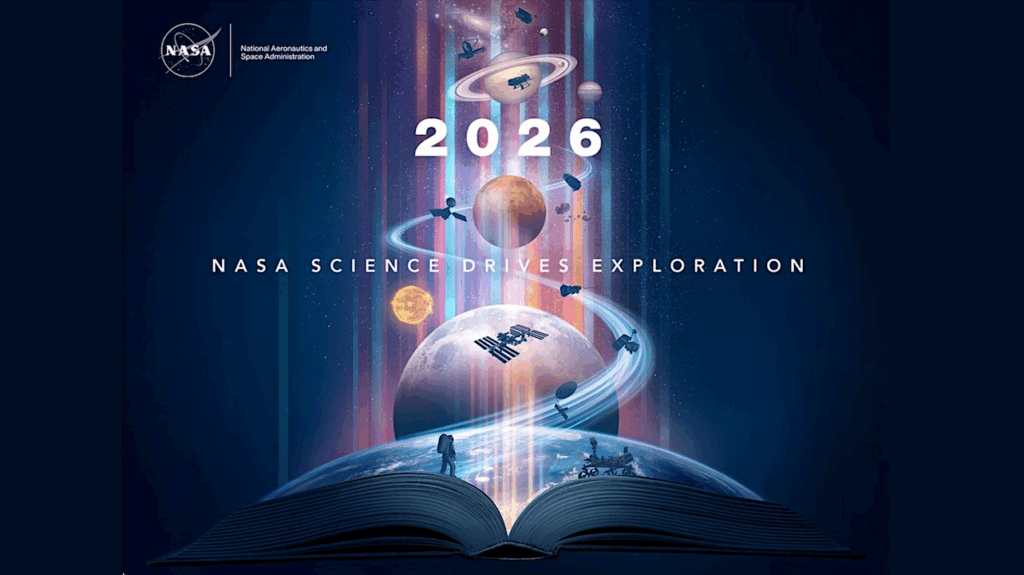Instituto de Astrofísica e Ciências do Espaço Paves The Way In The Field Of Exoclimatology

Three papers about “hot jupiter” WASP-76 b, led by Instituto de Astrofísica e Ciências do Espaço researchers, will be the foundation for understanding the global climate of a giant exoplanet.
In the last few years, exoplanet WASP-76 b’s has been thoroughly studied by researchers at the Instituto de Astrofísica e Ciências do Espaço (IA1), where they found barium2 and a possible glory effect3 in its atmosphere. In a study4 published today in the journal Astronomy & Astrophysics, an international team5, led by IA researcher Ana Rita Costa Silva, further found evidence of iron winds in the region of the “Hot Spot” on this hot jupiter – a location highly irradiated by the star that accumulates a lot of heat.
Costa Silva, a PhD student at the Dep. of Physics and Astronomy of the Science Faculty of UPorto and at the University of Geneva (Unige), comments: “We studied the dayside of WASP-76b, which has a temperature of 2400 degrees Celsius, using the ESPRESSO6 spectrograph at ESO’s Very Large Telescope (VLT), and detected the emission of light coming from iron atoms in the dayside of this exoplanet. This tells us that there are “iron winds” in this part of the atmosphere, moving from the lower to the upper layers, probably because there is a hot spot.”
The use of a large telescope like the VLT was critical to collect the light coming directly from the planet, given that it is very dim at optical wavelengths, with the starlight dominating the data. Olivier Demangeon (IA & DFA-FCUP), co-author of the paper, stresses that: “ESPRESSO was paramount to this study. Thanks to its stability and precision, we managed to model the stellar light with enough accuracy to reveal the planetary signal hidden under it”.
Ana Rita Costa Silva stresses that: “If the uncertainties in our data were too big, we probably wouldn’t have been able to make this claim”. This is only the second time high-resolution spectra have been obtained for the dayside of WASP-76b, and the first time it’s done in optical wavelengths. “These discoveries help us understand the structure of the atmosphere, such as knowing how the temperature changes with altitude, or what chemical species exist – and where – on this exoplanet”, adds Costa Silva.
This work was inspired by a result published in 2020 in the journal Nature7, where an international team, featuring several IA researchers, analysed ESPRESSO data of another region of the atmosphere of WASP-76b and proposed iron rain to explain their findings. In October of 2022 another study led by IA researcher Tomás Azevedo Silva, found Barium in WASP-76 b’s upper atmosphere, an element 2.5 times heavier than iron. “Because of the gravity of this planet, we expected that heavier elements would rapidly sink to the lower layers of the atmosphere”, explains Olivier Demangeon. And last april, Demangeon led a team, which used ESA’s Cheops space mission to observe potential signs of the rainbow-like ‘glory effect’ in WASP-76 b.
“Other investigations have detected iron and its winds in other parts of the planet, as well as other chemical species and more information about the dynamics of the atmosphere”, adds Costa Silva. She is amazed that: “we are piecing together the atmospheric composition and patterns of an entire world that is 634 light-years from us! We are uncovering its climate and providing information to create 3D models of this exoplanet’s atmosphere”.
IA’s strategy in detection and characterization of exoplanets, currently in place with the ESPRESSO and NIRPS spectrographs and ESA’s Cheops space mission, will continue for the foreseeable future, with the next generation of instruments and space missions with strong IA involvement. This includes ESA’s PLATO and ARIEL space missions, with launch dates of 2026 and 2029 respectively, and the installation of the ANDES8 spectrograph, which will begin operations early in the 2030 decade, when it’s installed in the largest telescope of the next generation, ESO’s ELT.
All these studies are preparing the IA team for the next big steps, where instruments like ANDES will play a critical role. ANDES is even expected to allow for the detection of chemical species in the atmospheres of Earth-like planets orbiting other suns, opening the door to the detection of life-signatures. “Our strong contribution to the ANDES project, where the IA team is responsible for both scientific and technological developments, will guarantee that we will be leading novel discoveries in the field”, added Nuno Cardoso Santos (IA & DFA-FCUP), PI of the Towards the detection and characterization of other Earths group at IA and co-author of the paper.
Notes
- The Instituto de Astrofísica e Ciências do Espaço (Institute of Astrophysics and Space Sciences – IA) is the reference Portuguese research unit in this field, integrating researchers from the University of Lisbon, the University of Coimbra and the University of Porto, and encompasses most of the field’s national scientific output. It was evaluated as “Excellent” in the last evaluation of research and development units undertaken by Fundação para a Ciência e a Tecnologia (FCT). IA’s activity is funded by national and international funds, including FCT/MCES (UIDB/04434/2020 e UIDP/04434/2020).
- The paper “Detection of Barium in the atmospheres of ultra-hot gas giants WASP-76b & WASP-121b, And new detections of Co and Sr+ on WASP-121b”, was published in the journal Astronomy & Astrophysics, Vol.666, L10 (DOI: 10.1051/0004-6361/202244489).
- The paper “Asymmetry in the upper atmosphere of the ultra-hot Jupiter WASP-76 b”, was published in the journal Astronomy & Astrophysics, Vol.684, A27 (DOI: 10.1051/0004-6361/202348270).
- The paper “ESPRESSO reveals blueshifted neutral iron emission lines on the dayside of WASP-76 b”, was published in the journal Astronomy & Astrophysics, Vol.689 (DOI: 10.1051/0004-6361/202449935).
- The team is: A. R. Costa Silva, O. D. S. Demangeon, N. C. Santos, D. Ehrenreich, C. Lovis, H. Chakraborty, M. Lendl, F. Pepe, S. Cristiani, R. Rebolo, M. R. Zapatero-Osorio, V. Adibekyan, Y. Alibert, R. Allart, C. Allende Prieto, T. Azevedo Silva, F. Borsa, V. Bourrier, E. Cristo, P. Di Marcantonio, E. Esparza-Borges, P. Figueira, J. I. González Hernández, E. Herrero-Cisneros, G. Lo Curto, C. J. A. P. Martins, A. Mehner, N. J. Nunes, E. Palle, S. Pelletier, J. V. Seidel, A. M. Silva, S. G. Sousa, A. Sozzetti, M. Steiner, A. Suárez Mascareño, and S. Udry
- The ESPRESSO (Echelle SPectrogaph for Rocky Exoplanet and Stable Spectroscopic Observations) spectrograph is a high-resolution instrument, installed in ESO’S Very Large Telescope (VLT). It was built to search and discover Earth-like exoplanets, able to support life. In order to do that, it can detect velocity variations of about 0.36 km/h, ESPRESSO will also be the most powerful tool in the world to test if the physical constants of Nature have changed since the early ages of the Universe, as predicted by some fundamental theories of Physics.
- The paper “Nightside condensation of iron in an ultra-hot giant exoplanet” was published in the journal Nature, 580, p.597–601 (DOI: 10.1038/s41586-020-2107-1)
- ANDES (ArmazoNes high Dispersion Echelle Spectrograph) will be a spectrograph, to be installed in the ESO’s ELT observatory (Cerro Armazones, Atacama desert, Chile). It will observe, with great precision, individual astronomical objects in visible and infrared wavelengths, which will allow researchers to seek life markers through the analysis of exoplanets’ atmospheres, study galaxy evolution and identify the first generation of stars that formed in the early Universe, or determine if the universal constants vary over time.
Astrobiology








